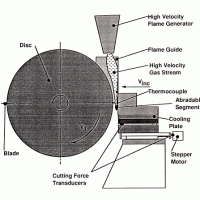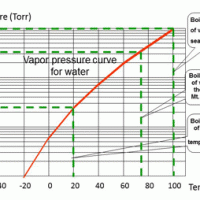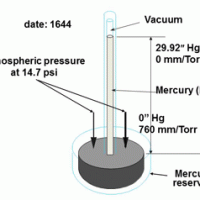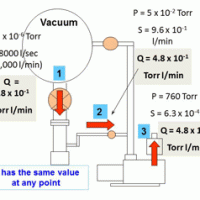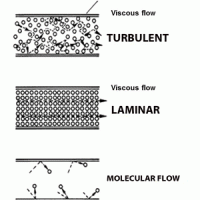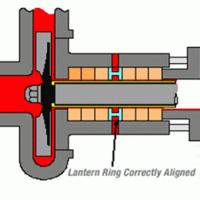For maximum fuel efficiency, many gas turbine engine designs depend on sacrificial coatings to tighten internal clearances between moving parts. An extra gap of .005″ between the rotating blades and the engine casing can increase fuel consumption by as much as 0.5%. As fuel comprises more than half of direct operating costs, this waste can be significant. Engine efficiency largely depends on close clearance between blades and casing. Clearance can be affected by a number of engine operating variables, including casing expansion and contraction, loading due to maneuvering, thrust, gust, stall, vibration and manufacturing tolerances. An industrial turbine engine manufacturer (“OEM”) was experiencing unsatisfactory results with the ring segment coatings used to maintain rotor-shroud clearance. Because of poor abradability, the coatings cause excessive wear on the tips of the turbine blades. The OEM and VAC AERO agreed to work cooperatively to develop an improved abradable coating for these applications.
Materials normally used in sacrificial coatings for gas path seals include sintered metal-powder segments, sintered metal-fiber segments, metallic honeycomb (filled and unfilled), elastomers and thermally sprayed abradable coatings. Thermally sprayed coatings offer advantages over the other materials, including direct application, easy removal and repair, variety of coating materials and good performance. New abradable thermal spray coating materials have been proposed for performance in industrial turbine engines at operating temperatures up to 980°C.
An investigation of a variety of these new materials was under taken in order to quantify their performance during cyclic oxidation burner rig testing, hot corrosion burner rig testing and hot abradability rig testing as compared to existing abradable coating technology. Based on the results of these tests it was concluded that a significantly improved coating for abradable seals in industrial gas turbine engines was developed. This new coating can prevent excessive blade tip wear between 24,000-hour inspection intervals at operating temperatures up to 980°C. The successful coating consists of a specially heat treated MCrAIY bond coat, applied by HVOF, covered with a proprietary abradable top coat, applied by air plasma spray. By Jeff Pritchard, Scott Rush and A. Kiela

